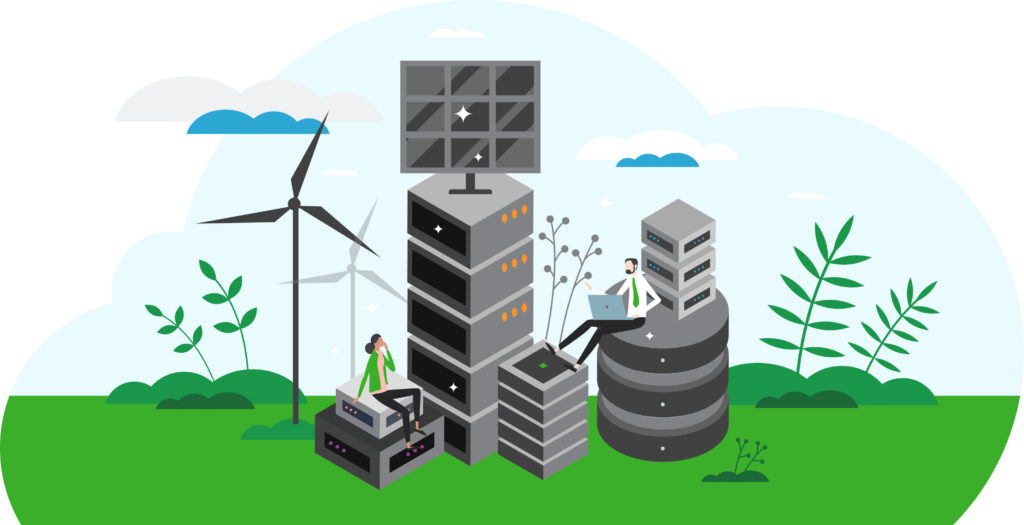Artificial intelligence (AI) is undeniably transforming industries, redefining efficiency, and accelerating innovation. But as organizations race to scale AI, the conversation is shifting from what it can do to what it takes to get there, operationally, environmentally, and financially.
Data centers already draw a sizable share of the world’s electricity, roughly 1 to 2 percent today, and that footprint is poised to expand dramatically. By 2030, they could consume up to 21 percent of global power,1 fueled largely by the demands of AI. Each new breakthrough AI model, from generative to agentic, brings not just innovation, but rising emissions and escalating energy costs.
Environmental pressures from AI workloads aren’t a future risk, they’re already reshaping IT strategies and boardroom priorities. Carbon tracking is now a core business metric. While past efficiency gains, from smarter chips to better cooling, helped delay the curve, they’re no longer enough to flatten it.
Emerging technologies such as neuromorphic, optical, and quantum computing may eventually deliver game-changing gains in efficiency and performance,2 but for now, green computing is shifting from a niche initiative to a strategic mandate—the difference between scaling fast and scaling smart.
Redefining Efficiency for a Compute-Hungry World
Efficiency used to mean faster systems and lower latency. Now, when a single AI model can consume more than an entire office floor, the metric has changed, from output per second to output per watt.
Today, efficiency is about designing systems that do more with less, across data centers, edge environments, and enterprise stacks. Approaches that factor in cooling, e-waste, and embodied carbon can reduce emissions and energy use while still accelerating time-to-value. Industry experts call it an inflection point, reshaping both demand and design.3
The same technologies driving IT forward are testing the limits of sustainability. Green isn’t an add-on. It has to be built in.
But what does building greener systems actually mean in practice?
Inside the Stack: What Green Computing Looks Like Now
Green computing isn’t a silver bullet—it’s a systems mindset. It’s about making smarter, lower-impact decisions at every layer of the stack.4 Here are a few ways organizations are putting sustainability into practice:
- Smarter hardware choices
Teams are investing in hardware that delivers more performance per watt, AI-optimized GPUs, low-power processors, and energy-efficient architectures. Rather than defaulting to rip-and-replace, they’re extending equipment life through targeted maintenance, refurbishment, and reuse. - Software that runs lean
Sustainability doesn’t stop at the physical layer. Developers are rethinking model size, structure, and training workflows, using pruning, quantization, and batch optimization to reduce energy draw. Code now carries carbon weight. Every line matters. - Power and cooling with a conscience
Data centers remain one of IT’s biggest environmental pressure points. Teams are rethinking the model, using renewables, optimizing cooling with AI, and adopting modular designs that reuse heat and materials. Liquid cooling is going mainstream, especially for high-density GenAI racks. To manage water usage, many are turning to closed-loop systems and other low-impact cooling methods.4 - Cloud and hybrid with intention
Cloud is flexible—but not always green. Teams are vetting providers for sustainability SLAs, selecting regions with cleaner grids, and demanding greater transparency. Hybrid models give them more control, placing workloads where they run cleanly and at scale.
Toward a Green AI Strategy That Works
Sustainability now has a seat at the main table. What was once a nice-to-have is now a must-track, must-improve imperative. From Corporate Sustainability Reporting Directive (CSRD) to SEC disclosures to ESG boards and carbon-conscious customers, the question has shifted—from whether you’re green to how green, how fast, and how measurable.
Green computing is no longer feel-good messaging. It’s operational strategy. CIOs, CTOs, and sustainability leads are mapping emissions from infrastructure to code. KPIs are evolving: carbon per transaction, energy per training run, emissions per inference cycle. Environmental posture now shapes funding, partnerships, and talent. Your sustainability metrics are becoming part of your market narrative. And data-hungry tech isn’t just reshaping IT, it’s redrawing the ESG playbook.
So, what’s the next move for IT leaders scaling AI without blowing the carbon budget?
- Start with visibility. If you can’t measure it, you can’t manage it. Track energy use across training, inference, simulation, and data movement. Use tools and platforms that provide actionable, carbon-aware metrics, not just good-looking dashboards.
- Design with intent. Efficiency starts in the architecture. Build with sustainability in mind, from frameworks and data flows to cloud region selection. The best-performing model in the world won’t help if it quietly explodes your carbon footprint.
- Raise the stakes. Sustainability doesn’t belong in a report index. It should show up in roadmap reviews, product planning, and customer conversations. When stakeholders ask about your carbon impact, and they will, you’ll need answers that stand up.
- Bring in expertise. You don’t have to start from scratch. But you do need people who know how to link infrastructure to emissions. Whether internal or external, they’ll help turn strategy into daily practice.
The Future of AI Is Cleaner by Design
Sustainability doesn’t need a spotlight—it needs a seat at every table. In the age of compute-everything, the winners won’t be those who scaled fastest. They’ll be the ones who scaled responsibly. Because long-term success today demands more than speed. It calls for foresight, accountability, and building with the future in mind.
Green isn’t just a sustainability play, it’s how leaders future-proof their performance, reputation, and returns. Because green computing isn’t one project. It’s a pattern, a series of better decisions that make modern IT cleaner, smarter, and ready for what’s next.
- MIT Management Sloan School, AI Has High Data Center Energy Costs — But There Are Solutions, January 2025.
- Gartner, Green Computing Aligns Your Digital Transformation with Sustainability, September 2024.
- DCD, Four Key Trends Disrupting Data Centers in 2025, March 2025.
- Forbes, Liquid Cooling: A Catalyst For Sustainable AI In Data Centers, April 2025.
